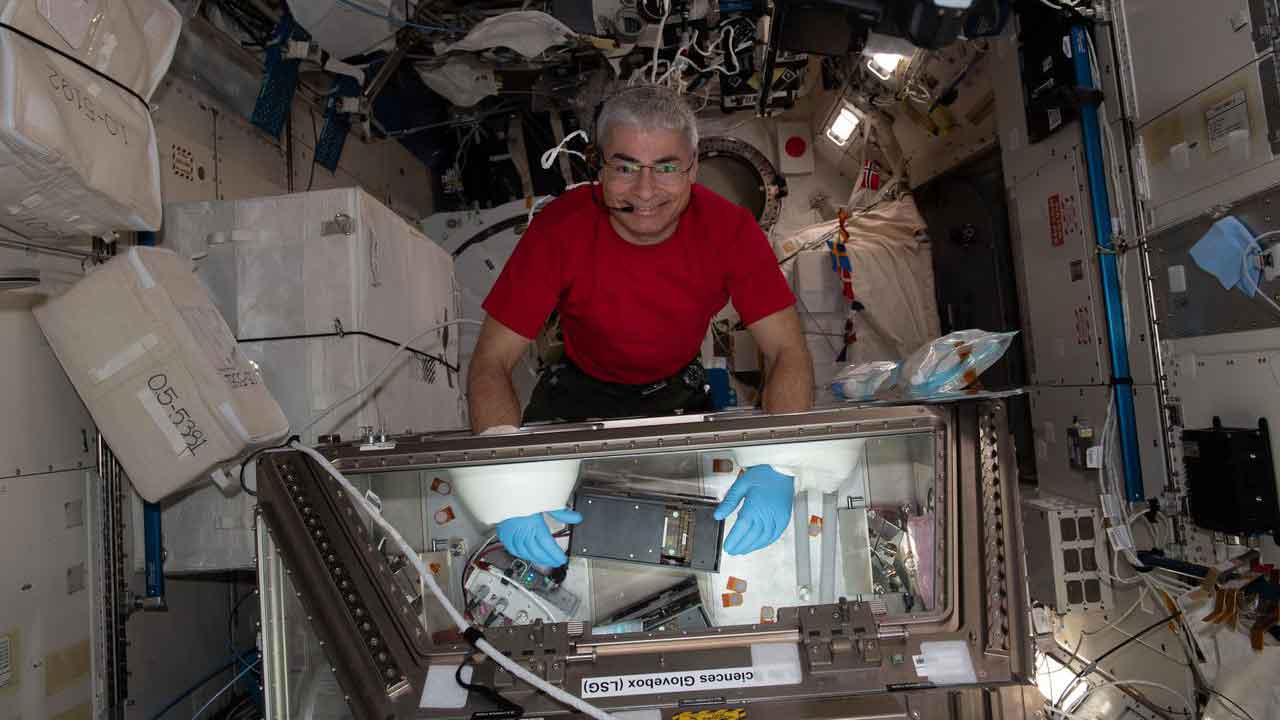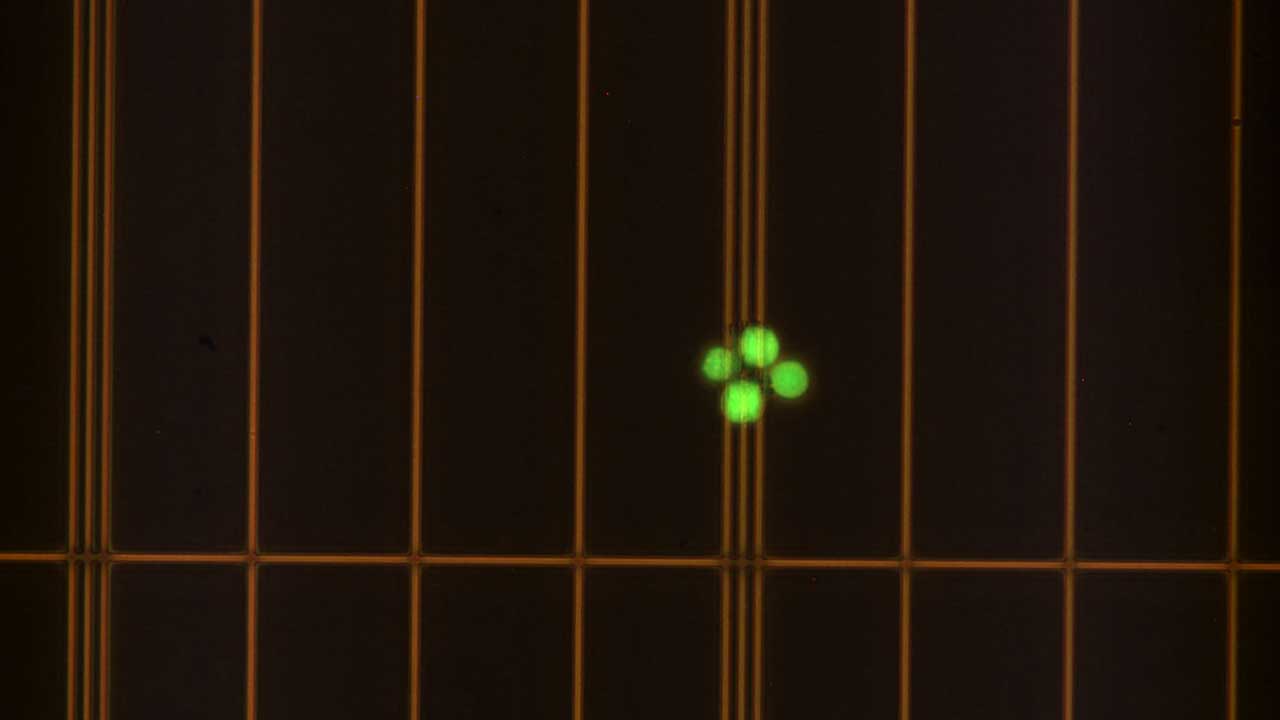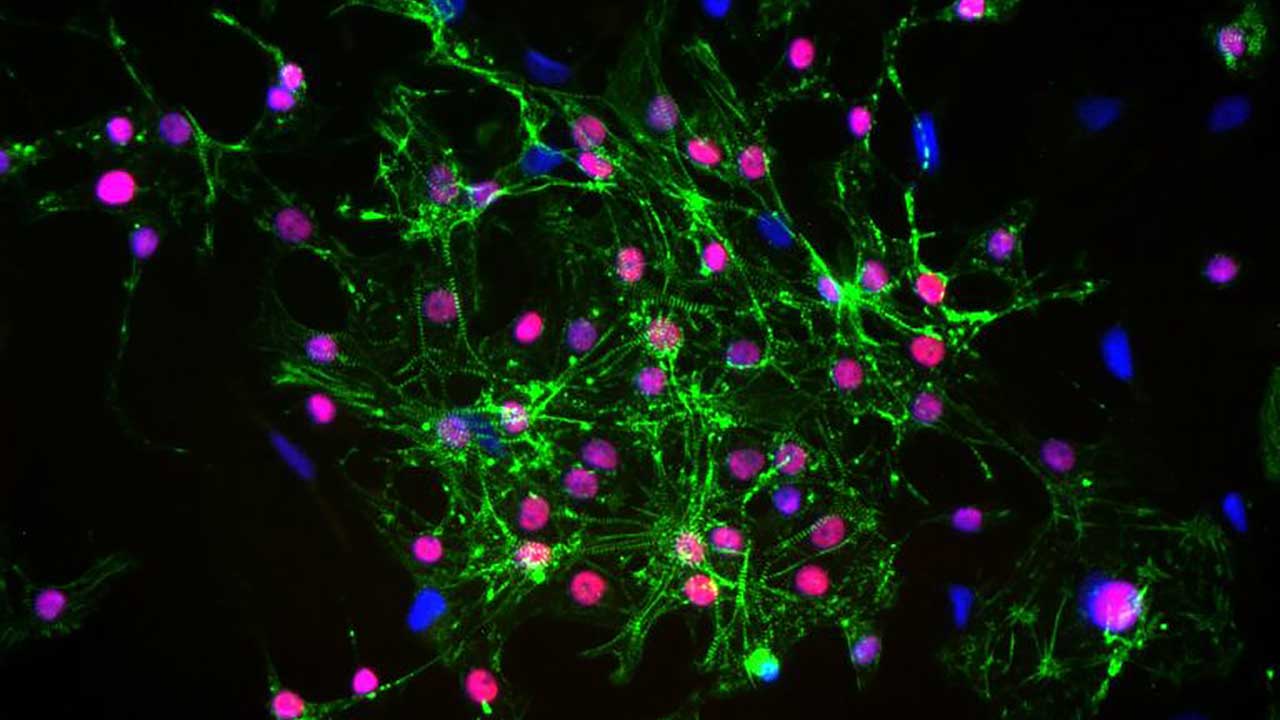
Overview:
Stem cell research in space offers great potential to expand our understanding of cellular behavior and therapeutic applications. The International Space Station (ISSInternational Space Station) National Laboratory empowers scientists to unravel the mysteries of how microgravityThe condition of perceived weightlessness created when an object is in free fall, for example when an object is in orbital motion. Microgravity alters many observable phenomena within the physical and life sciences, allowing scientists to study things in ways not possible on Earth. The International Space Station provides access to a persistent microgravity environment. influences stem cell proliferation, differentiation, and function. These investigations are unlocking key mechanisms that could significantly enhance stem cell performance, paving the way for accelerated advancements in regenerative medicine and biotechnology.
Introduction:
Stem cell research in low Earth orbit(Abbreviation: LEO) The orbit around the Earth that extends up to an altitude of 2,000 km (1,200 miles) from Earth’s surface. The International Space Station’s orbit is in LEO, at an altitude of approximately 250 miles. (LEO) expands our understanding of stem cell proliferation, differentiation, and function, to improve therapies and deepen our understanding of cellular behavior in regenerative medicine.
At a Glance:
- Microgravity fosters natural 3D stem cell growth, mimicking the human body’s environment more effectively than Earth-based 2D cultures.
- Space-based research enhances our ability to understand differentiation, proliferation, and tissue regeneration.
- Applications range from drug discovery to regenerative medicine, disease modeling, and biomanufacturing in space for clinical use on Earth.
Why Space?
Microgravity provides a unique environment for stem cell research. Free from the constraints of Earth’s gravity, cells exhibit enhanced 3D growth and develop physiological structures that more closely resemble the human structures. This environment allows researchers to gain unprecedented insights into cell behavior, tissue development, and regeneration, advancing fields like regenerative medicine, cancer research, and personalized therapies. The ISS serves as a vital platform for these studies, unlocking the transformative potential for addressing degenerative diseases and age-related health challenges.
Unique Research Areas:
Stem Cell Expansion in Microgravity:
Stem cells grown in microgravity show improved proliferation and maintain their “stemness,” enabling large-scale production for clinical applications without differentiation.
Enhanced Cell Differentiation:
Research in microgravity shows accelerated or enhanced differentiation of certain stem cells, offering new ways to study developmental biology and improve the production of specialized cell types for therapy.
3D Tissue Models in Microgravity:
Studies on the ISS enable stem cells to develop into three-dimensional structures, mimicking organs and tissues. This allows researchers to model diseases more accurately and test therapeutic interventions in ways not possible on Earth.
Advanced Biomanufacturing:
The ISS provides an ideal platform for exploring how stem cells can be used in manufacturing advanced therapies, including the production of tissue patches, organoids, or cell-based treatments to address degenerative diseases.
Categories of Stem Cell Research in Space
Mesenchymal Stem Cells (MSCs):
- MSCs grown in space maintain their morphology, phenotype, and proliferation capabilities.
- Enhanced immunosuppressive properties were observed.
- Microgravity may inhibit differentiation, preserving the stemness of MSCs, which is beneficial for clinical applications.
- Space-grown MSCs could be used to treat central nervous system diseases, such as spinal cord injuries, due to increased neural development markers in MSCs grown in microgravity.
Hematopoietic Stem Cells (HSCs):
- Microgravity affects HSC proliferation and differentiation, with an observed preservation of stemness.
- Space-grown HSCs showed suppressed erythropoiesis and increased macrophage differentiation.
- Applications include potential therapies for anemia and other blood-related disorders
Cardiomyocytes Derived from Induced Pluripotent Stem Cells (iPSCs):
- iPSC-derived cardiomyocytes grown in space demonstrated structural and functional integrity.
- Microgravity enhanced gene pathways related to mitochondrial function and calcium signaling.
- Applications include advanced cardiac repair therapies and models for studying spaceflight-induced cardiac remodeling
3D models of the Human Brain Derived from Induced Pluripotent Stem Cells (iPSCs):
- Complex human models containing iPSC-derived neurons, astrocytes, oligodendrocytes, and microglia can be used for disease modeling and drug discovery.
- Applications focus on regenerative therapies for neurodegenerative diseases like Alzheimer’s and Parkinson’s.
Cardiovascular Progenitor Cells (CPCs):
- CPCs in space displayed increased DNA repair capabilities and enhanced differentiation into cardiac tissues.
- Applications focus on cardiac regeneration and repair through enriched and functional cardiomyocytes.
Examples of ISS Stem Cell Research:

Media Credit: NASANational Aeronautics and Space Administration
Cancer Therapy Development:
Microgravity facilitates enhanced growth of tumor organoids and patient-derived tumor organoids (PTOs), offering a groundbreaking platform for cancer research. These 3D structures mimic the complexity of human tumors more accurately than traditional models on Earth, allowing scientists to study cancer behavior, progression, and drug response with unprecedented precision. The space environment accelerates the development of targeted therapies, paving the way for personalized medicine and more effective cancer treatments.

Media Credit: NASA
Cardiac Tissue Development in Space:
Cardiomyocytes derived from iPSCs grown in space showed improved structural and functional properties, contributing to advancements in cardiac repair. Scientists are using the microgravity environment to develop cardiac tissue patches for potential use in repairing damaged heart tissue. In addition, researchers are using advanced 3D models to investigate cardiac toxicity in anti-cancer drugs used to stop or slow down the growth of cancer cells.

Media Credit: NASA
Stem Cells for Osteoporosis Research:
Microgravity on the ISS provides a unique environment for studying low bone density, and accelerated bone loss in space closely mimics the effects of osteoporosis on Earth. Experiments using stem cells in space have allowed researchers to investigate the mechanisms behind bone degeneration and regeneration. These studies are advancing the development of innovative therapies to prevent and treat osteoporosis and other conditions involving bone loss, offering hope for improved health outcomes for millions.

Media Credit: Drs. Joseph Wu, Dilip Thomas and Xu Cao, Stanford Cardiovascular Institute.
Organoid Development for Drug and Toxicity Studies:
The microgravity environment of space enables researchers to grow organoids derived from stem cells that closely mimic the structure and function of human organs. These advanced models provide a more accurate platform for studying drug efficacy and toxicity, which reduces reliance on traditional animal testing and enhances predictive accuracy. This breakthrough approach accelerates the development of safer, more effective treatments for various diseases.

Media Credit: Nicolette Pirjanian, New York Stem Cell Foundation
3D Models of the Human Brain in LEO:
Microgravity investigations in LEO enable the growth of 3D models of the human brain using neural stem cells. These studies provide unique insights into how stem cells differentiate and function in a microgravity environment, offering a deeper understanding of brain development and degeneration. The findings hold significant promise for developing therapies for neurodegenerative diseases such as Parkinson’s and Alzheimer’s, paving the way for breakthroughs in treating these challenging conditions.

Media Credit: National Aeronautics and Space Administration
Hematopoietic Stem Cells:
Studies in microgravity have shown enhanced expansion and differentiation of hematopoietic stem cells, the blood-forming cells critical for generating healthy blood and immune cells. This unique environment supports the development of high-quality stem cell populations, which could significantly advance treatments for blood disorders such as anemia, leukemia, and other hematological conditions. These findings hold promise for improving cell-based therapies and expanding their availability to patients in need.
Key Benefits of the ISS for Stem Cell Research
Enhanced Growth and Differentiation:
- Microgravity promotes the formation of 3D structures such as organoids and tissue constructs that closely mimic natural development.
- The lack of gravity-driven sedimentation enhances cell-cell and cell-matrix interactions, facilitating more natural differentiation pathways.
Improved Understanding of Cell Behavior:
- Studying stem cells in microgravity allows researchers to observe cellular mechanisms and signaling pathways uninhibited by gravity.
- Insights from such studies can help fine-tune protocols for maintaining stem cell pluripotency and directing differentiation.
Overcoming Challenges in Stem Cell Production:
- Microgravity has been shown to improve stem cell proliferation rates while preserving their genetic and functional integrity.
- This could lead to more efficient production pipelines for clinical applications.
- By leveraging microgravity, scientists can explore scalable production methods for stem cell-based therapies, tissue engineering, and organ-on-chip systems.
By leveraging the unique environment of the ISS, researchers can address key barriers in stem cell science, leading to innovations in regenerative medicine and therapeutic development. A focused effort in this area holds promise to overcome current limitations, bringing us closer to realizing the full potential of stem cell technology.










